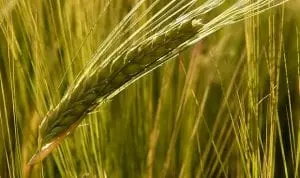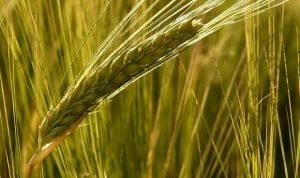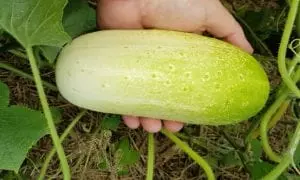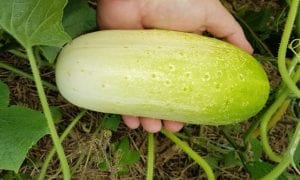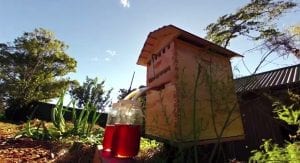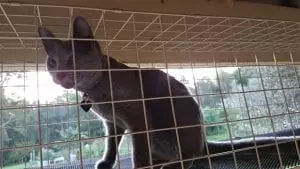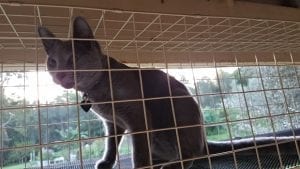Dogbane (Plectranthus caninus) is a semi-succulent perennial herb from the mint family which is native to South Africa. Despite not being edible, dogbane has numerous uses in a home food garden and is considered a valuable pioneer support plant by permaculturists. Tough, low-maintenance, fast-growing yet not invasive, dogbane might just be your newest garden go-to!
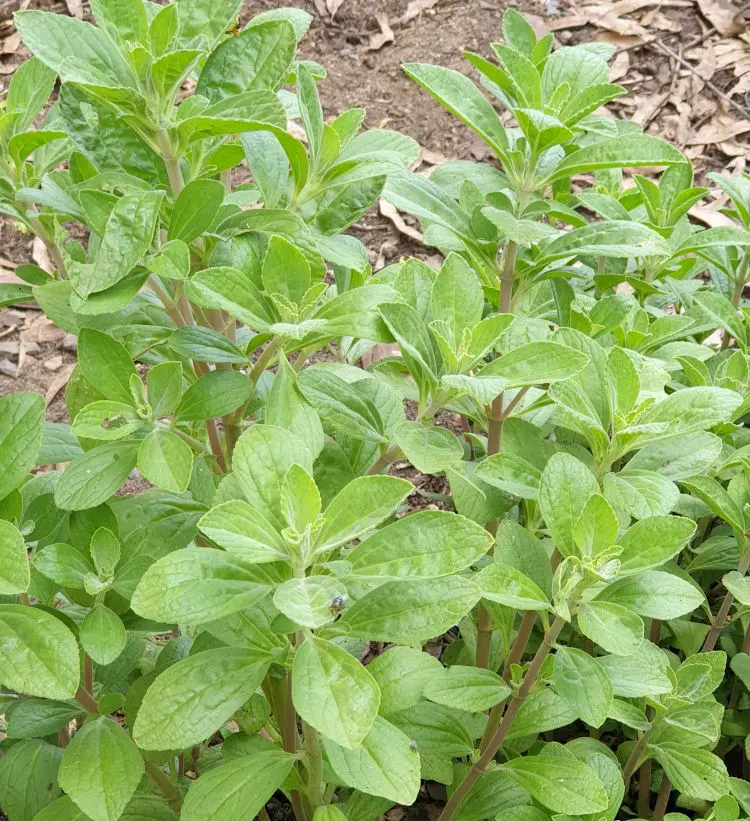
What is Dogbane?
The plant belongs to the huge Plectranthus genus, with the formal species identification being P. caninus. Dogbane is also called coleus canina, which is incorrect. This name is something in between a colloquial reputation and a retail marketing gimmick, as dogbane (bane originally meaning slayer) is reputed to repel dogs. Bane originally meant ‘slayer’ in old English, so both the lay and the scientific terms became indicative of dogbane’s perceived properties. The name dogbane is also used to describe several plants in the Apocynum genus. These are found mostly in the northern hemisphere and look very different to the semi-succulent Plectranthus that we know here in Australia.
When in flower, it sports a tall inflorescence with blue-purple flowers which are a wonderful attractant for pollinating insects. It makes an excellent ground cover along edges & around (selected) fruit trees, plus it is said to have insect-repelling properties.

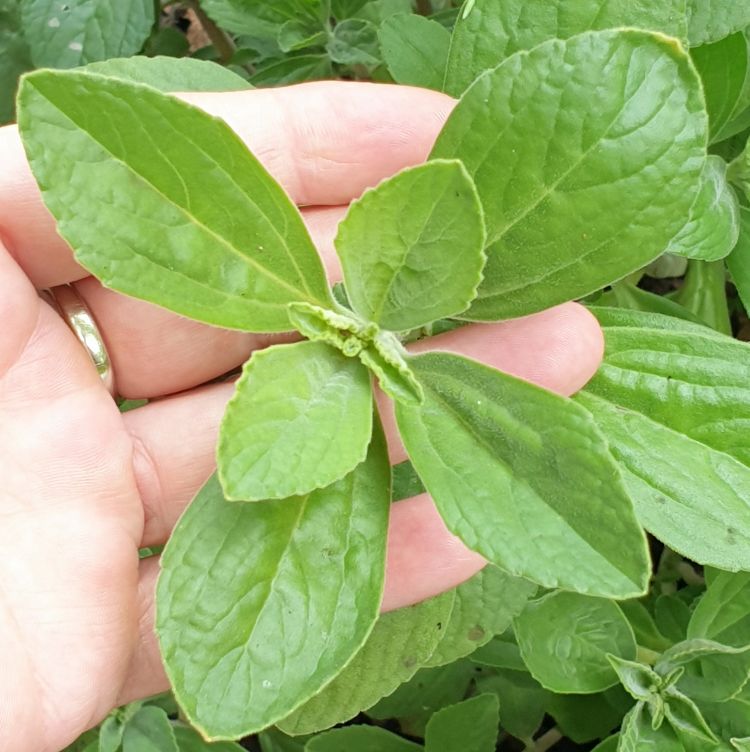
Dogbane has light green leaves which hold moisture and stand up firmly, even in hot, dry conditions. The leaves are narrow and obovate, meaning they are broader above the middle. They may be approximately 3-4 cm long and 2-4 cm wide. The branches are semi-erect and the plant is covered in small hairs. Dogbane has a growing habit like that of mother-of-herbs, which is also in the mint family. It spreads laterally yet retains upright stems, so works just as well in pots, hanging baskets, or in the ground.
The insect-repelling properties of dogbane makes it ideally suited to growing in small animal pens (hello chickens!), and the unlikelihood of them eating the dogbane makes it perfect for helping to cool the soil and surrounding air during hot summers.

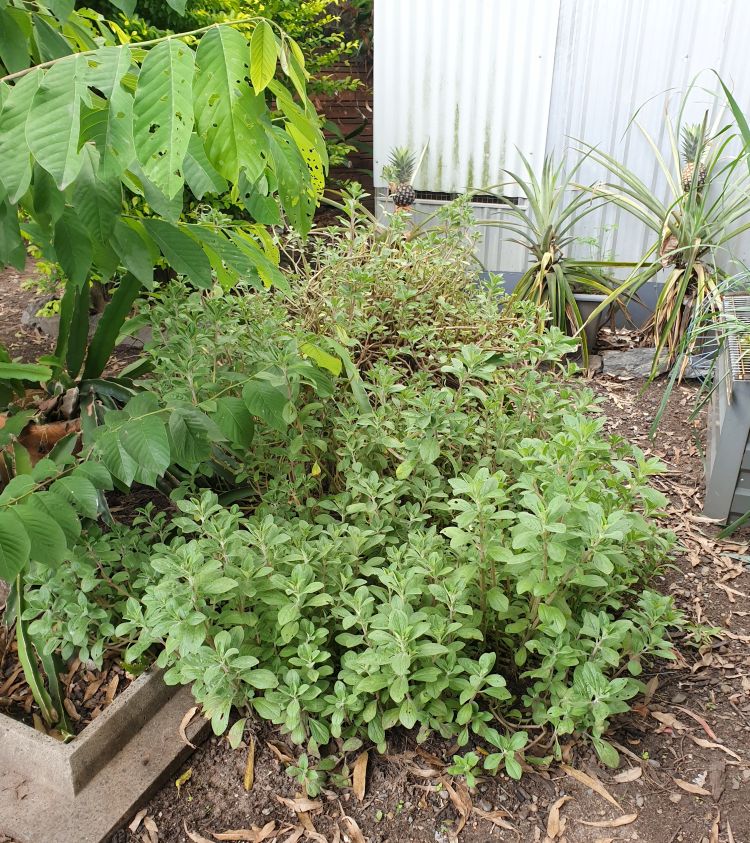
The Benefits of Dogbane
Dogbane is a good general companion plant for fruiting trees and vegetables, as it is not invasive or water-hungry. It grows very quickly and its stems are relatively heavy, so it’s a great ground cover that helps suppress weeds.
The leaves have a distinct aroma which is stronger when they are crushed. Dogs and cats are thought to be able to smell this aroma and be repelled from the plant. While there is no scientific evidence to support this claim, it has led to dogbane being known as ‘scaredy cat plant’.

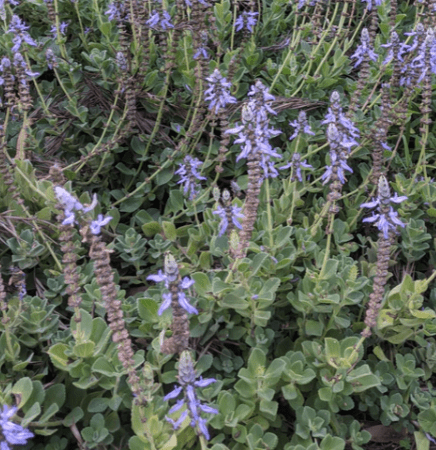
The blue/purple flowers are attractive to pollinators and appear as a tall inflorescence. Dogbane may flower at any time of the year, depending on weather conditions and your climate zone. This is very handy for the home gardener, as we always have one crop or another that we need pollinators around for. Bees, of course, are the best-known pollinators, because they pollinate nearly 80% of all crops. Bees have photoreceptors that are sensitive to ultraviolet, blue and green wavelengths, so dogbane flowers are the perfect colour for attracting them.

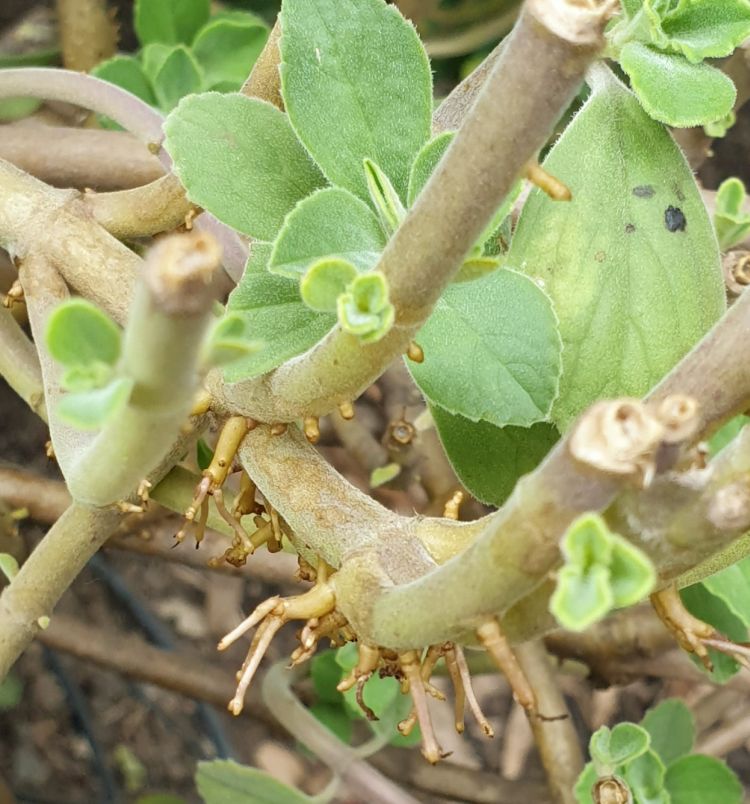
How to Start Dogbane
Dogbane is propagated by stem cuttings, not seed. This is one of the easiest and quickest plants you’ll ever propagate. For this reason, it is ideal for beginners and those with lots of space to fill. To make more dogbane plants, all you need to do is take some cuttings (4-6″ long is best) and pop them into moist soil or potting mix. Make a clean cut across each stem just below a node using sterile secateurs. If you see early root growth (like that shown above), all the better. Keep cuttings in the shade and keep the soil moist (not wet) while roots develop.
Growing Conditions
Ideally, dogbane suits hot, dry conditions where it is used as a ground cover. Dogbane is frost-tender, & can be grown in anything from full summer sun to part winter shade, depending on your climate zone. A warm and somewhat protected position is best, as dogbane can be damaged by strong wind, frost or extreme heat. Here in subtropical south-east QLD, where the sun is extremely strong, dogbane does best with significant shade. While this is a fairly tough, low-care plant, dogbane can become leggy with inadequate light or wither in too-strong sun.

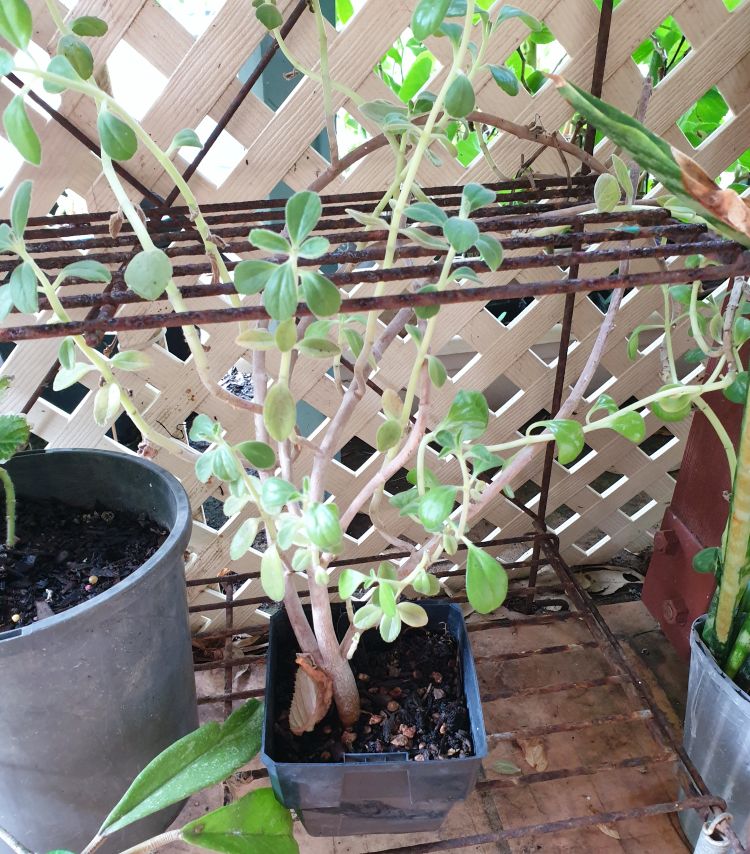
Despite being a semi-succulent that can withstand dry periods once established, moist soil with good drainage is recommended for optimum growth. This is of greatest importance when the plant is young. Dogbane is not fussy about its soil, so potting mix or average garden soil will be fine. The herbaceous perennial dogbane grows easily in pots, in the ground, or in a rockery, where it blends nicely with succulents.

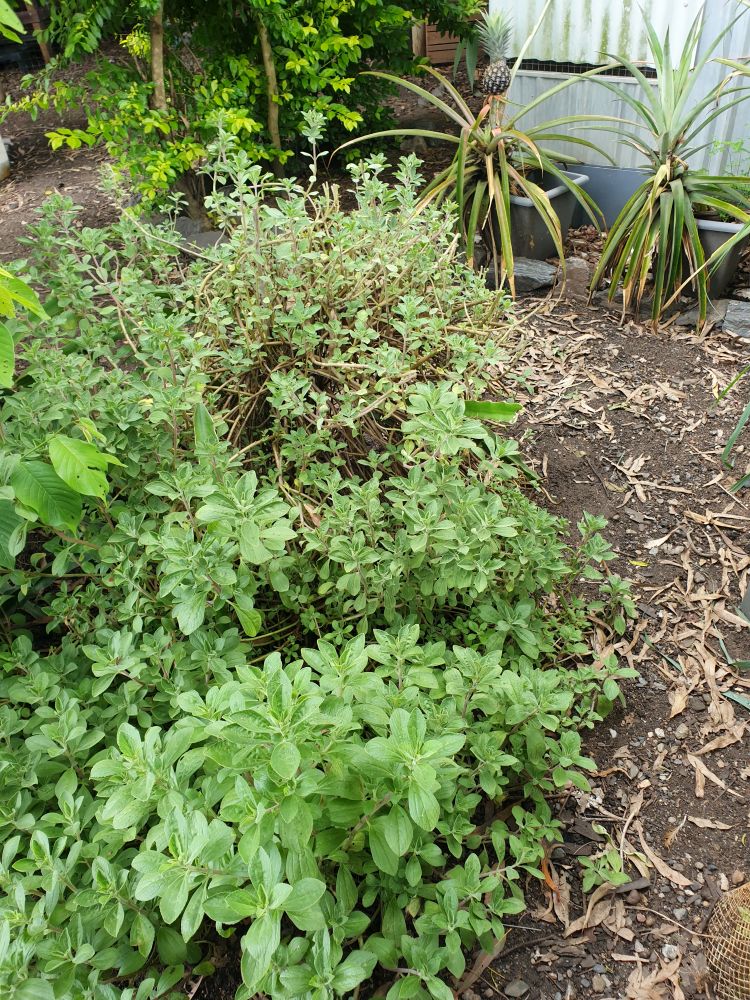
Ongoing Care
Dogbane is generally an unfussy, undemanding plant that can handle most climates- in fact, it’s very easy to set-and-forget about it. While it will spread laterally if left unchecked, it is visually pleasant and very easy to prune. It is not invasive, and shouldn’t require fertilising, unless your soil is particularly deficient.

